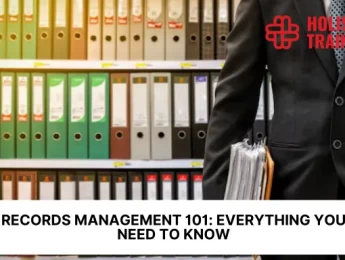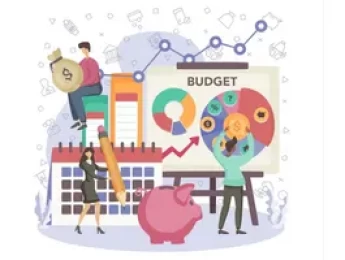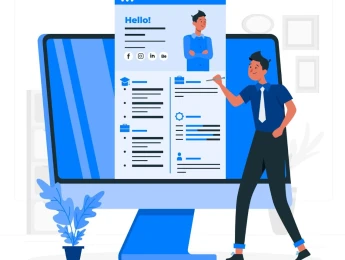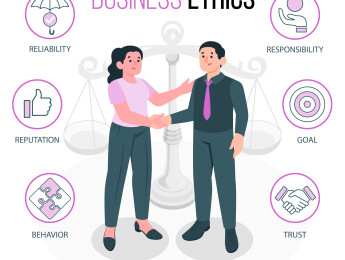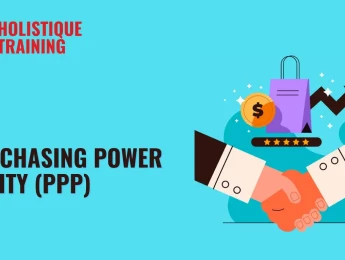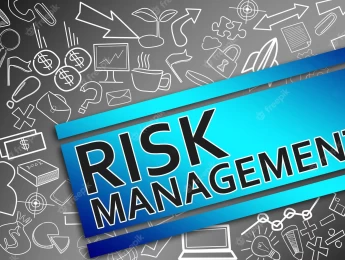- Table of Contents
- Introduction
- What is Persuasive Communication?
- Benefits of Persuasive Communication
- Influencing Decisions:
- Building Relationships:
- Encouraging Action:
- Enhancing Negotiation Skills:
- Facilitating Change:
- Improving Public Speaking:
- Boosting Confidence:
- Enhancing Critical Thinking:
- Principles of Persuasive Communication
- 1- Know Your Audience:
- 2- Establish Credibility:
- 3- Use Emotional Appeals:
- 4- Present Logical Arguments:
- 5- Be Clear and Concise:
- 6- Use Repetition:
- 7- Anticipate Objections:
- 8- Call to Action:
- NLP in Persuasive Communication
- Where is Persuasive Communication Used the Most?
- Presentations:
- Negotiations:
- Sales and Marketing:
- Politics:
- Media and Advertising:
- Interpersonal Relationships:
- Education:
- Corporate Communication:
- Steps to Master Persuasive Communication
- 1- Study Persuasive Techniques:
- 2- Understand Your Audience:
- 3- Practice Active Listening:
- 4- Develop Clear Messaging:
- 5- Use Engaging Stories:
- 6- Rehearse and Seek Feedback:
- 7- Be Authentic:
- 8- Embrace Adaptability:
- 9- Reflect and Improve:
- 10- Seek Opportunities for Practice:
- Conclusion
Introduction
Effective communication is a cornerstone of human interaction, influencing relationships, decisions, and actions. Among the various forms of communication, persuasive communication stands out as a powerful tool that can sway opinions, inspire action, and foster change. This blog post delves into the intricacies of persuasive communication, exploring its definition, benefits, guiding principles, and the role of neuro-linguistic programming (NLP). Furthermore, we will examine the contexts in which persuasive communication is most frequently employed and outline steps to master this essential skill.
What is Persuasive Communication?
Persuasive communication is the art of using language and rhetoric to convince others to adopt a specific viewpoint, take action, or change their behavior. It transcends mere information sharing; it seeks to influence the audience's thoughts and feelings, leading them to a desired conclusion. This form of communication employs a blend of emotional appeal, logical reasoning, and credibility to create a compelling message.
At its core, persuasive communication is about understanding the audience's needs, values, and beliefs. It requires the communicator to tailor their message to resonate with the audience, ensuring that it not only captures attention but also encourages engagement. Whether in written form, spoken dialogue, or visual presentations, persuasive communication is a skill that can be developed and refined over time.
Benefits of Persuasive Communication
The ability to communicate persuasively offers numerous advantages across various aspects of life. Here are some key benefits:
Influencing Decisions:
Persuasive communication is a powerful tool for influencing decisions in both personal and professional contexts. Whether you are trying to convince a colleague to support a project or persuading a friend to consider a different perspective, effective persuasive techniques can lead to favorable outcomes. This influence can extend to larger audiences, such as in public speaking or marketing, where a well-crafted message can sway the opinions of many.
Building Relationships:
At its core, persuasive communication is about connection. When individuals feel understood and valued, it fosters trust and rapport. Building strong relationships is essential in both personal and professional settings, as it encourages collaboration and open dialogue. Persuasive communicators often excel at identifying common ground and addressing the needs and concerns of others, which strengthens interpersonal ties and enhances group dynamics.
Encouraging Action:
One of the primary goals of persuasive communication is to inspire action. Whether motivating a team to complete a project, encouraging customers to make a purchase, or rallying support for a cause, persuasive techniques drive people to take steps toward a desired outcome. A compelling call to action can create a sense of urgency and excitement, leading to increased engagement and participation.
Enhancing Negotiation Skills:
Negotiations often hinge on the ability to persuade. Skilled negotiators use persuasive communication to advocate for their interests while also considering the needs of the other party. By employing techniques such as active listening, empathy, and strategic framing, negotiators can create win-win scenarios that satisfy both sides. This not only leads to successful agreements but also fosters long-term relationships built on mutual respect and understanding.
Facilitating Change:
In an ever-evolving world, the ability to advocate for change is crucial. Whether in organizations, communities, or broader societal contexts, persuasive communication is essential for driving progress. Advocates and leaders who can effectively communicate their vision and persuade others to join their cause can inspire movements, influence policy changes, and foster innovation. This ability to facilitate change is particularly important in times of uncertainty or resistance, where clear, persuasive messaging can help navigate challenges.
Improving Public Speaking:
Mastering persuasive communication enhances public speaking skills, allowing speakers to connect with their audience and deliver impactful messages. A persuasive speaker knows how to engage listeners, maintain their attention, and leave a lasting impression. This skill is invaluable not only in professional presentations but also in personal situations where effective communication can make a significant difference, such as at weddings, community events, or family gatherings.
Boosting Confidence:
Developing persuasive communication skills can significantly increase an individual’s confidence in expressing their ideas and opinions. As individuals become more adept at crafting compelling messages and engaging with others, they often find themselves more willing to speak up and share their thoughts. This newfound confidence can lead to greater opportunities for leadership, collaboration, and personal growth, empowering individuals to take on new challenges and advocate for themselves and their beliefs.
Enhancing Critical Thinking:
Engaging in persuasive communication requires individuals to think critically about their arguments, the needs of their audience, and the context of their message. This process encourages deeper analysis and reflection, leading to improved problem-solving skills. By considering multiple perspectives and anticipating objections, communicators become more adept at constructing logical, well-reasoned arguments that resonate with their audience.
In summary, the benefits of persuasive communication extend far beyond mere persuasion. They encompass the ability to influence decisions, build relationships, encourage action, enhance negotiation skills, facilitate change, improve public speaking, boost confidence, and foster critical thinking. As individuals cultivate these skills, they not only become more effective communicators but also more impactful leaders and collaborators in their personal and professional lives.
Principles of Persuasive Communication
To effectively persuade an audience, certain principles should guide the communication process. These principles include:
1- Know Your Audience:
Understanding your audience is paramount in persuasive communication. This involves researching their demographics, interests, values, and beliefs. By gaining insights into what motivates them, you can tailor your message to align with their needs and preferences. For instance, a persuasive message aimed at young professionals may focus on career advancement and work-life balance, while a message directed at retirees might emphasize leisure and financial security. According to LinkedIn, data analytics can also assist in identifying the most effective persuasion techniques tailored to specific audience segments and communication channels. The more you know about your audience, the more effectively you can connect with them.
2- Establish Credibility:
Credibility is a cornerstone of persuasive communication. Audiences are more likely to be persuaded by someone they perceive as trustworthy and knowledgeable. Establishing credibility can be achieved through various means, such as showcasing expertise, sharing relevant experiences, or citing credible sources. Additionally, being authentic and transparent in your communication fosters trust. When the audience believes in your integrity and expertise, they are more receptive to your message.
3- Use Emotional Appeals:
Emotions play a significant role in decision-making. Persuasive communication that evokes feelings can create a deeper connection with the audience. This can be done through storytelling, vivid imagery, or relatable anecdotes that resonate with the audience’s experiences. For example, a charity campaign might share a personal story of someone who benefited from their services, appealing to the audience's compassion and sense of empathy. By tapping into emotions, communicators can inspire action and motivate change.
4- Present Logical Arguments:
While emotional appeals are powerful, logical reasoning is equally important in persuasive communication. A well-structured argument supported by evidence enhances the persuasiveness of the message. This includes presenting facts, statistics, and logical reasoning that backup your claims. For instance, if you are advocating for a new policy in a workplace, providing data on its effectiveness in other organizations can strengthen your argument. Balancing emotional and logical appeals ensures a comprehensive approach that resonates with a broader audience.
5- Be Clear and Concise:
Clarity is essential in persuasive communication. A convoluted message can confuse the audience and dilute the intended impact. Aim for straightforward language and avoid jargon or overly complex terms that may alienate listeners. A clear message articulates the main points effectively, making it easier for the audience to grasp and remember your argument. Conciseness also respects the audience’s time and attention, making them more likely to engage with your message.
6- Use Repetition:
Repetition is a powerful tool in persuasion. By reiterating key points throughout your communication, you reinforce the message and help it stick in the audience’s mind. This can be particularly effective in speeches, advertisements, and presentations. However, it’s crucial to balance repetition with variety; repeating the same phrase excessively can lead to disengagement. Instead, vary the way you present your key points to maintain interest while ensuring that the central message is clear.
7- Anticipate Objections:
Addressing potential counterarguments demonstrates preparedness and strengthens your overall argument. By anticipating objections, you can proactively respond to concerns and reassure your audience. This not only shows that you have considered different perspectives but also helps to build trust. For example, if you’re promoting a new product, acknowledging potential drawbacks and explaining how they are mitigated can enhance your credibility and persuade skeptics.
8- Call to Action:
A strong persuasive message culminates in a clear call to action (CTA). This is a specific instruction that guides the audience on what steps to take next. Whether it’s signing a petition, making a purchase, or attending an event, a well-defined CTA provides direction and encourages immediate engagement. Effective CTAs are often framed positively, emphasizing the benefits of taking action. For instance, instead of saying "Don't miss out," you might say, "Join us today to be part of the change!"
By adhering to these principles, communicators can craft messages that are not only compelling but also resonate deeply with their audience. Mastering these principles enhances the effectiveness of persuasive communication, ultimately leading to greater influence and success in achieving desired outcomes.
NLP in Persuasive Communication
Neuro-linguistic programming (NLP) is a psychological approach that focuses on the connection between neurological processes, language, and behavioral patterns. NLP techniques can significantly enhance persuasive communication by improving how messages are crafted and delivered.
- Rapport Building: NLP emphasizes the importance of establishing rapport with the audience. Techniques such as mirroring body language and matching speech patterns can create a sense of connection and trust.
- Language Patterns: NLP provides insights into effective language patterns that resonate with different types of learners (visual, auditory, kinesthetic). Tailoring language to match the audience’s preferred style can enhance understanding and engagement.
- Anchoring: This NLP technique involves associating specific emotions or responses with particular stimuli. By creating positive anchors, communicators can evoke desired emotional responses during their presentations.
- Reframing: Reframing involves changing the way a situation or idea is perceived. By presenting information from a different angle, communicators can shift perspectives and encourage new ways of thinking.
- Visualization: Encouraging the audience to visualize outcomes can enhance motivation and commitment. Descriptive language that paints a vivid picture can help the audience imagine the benefits of adopting the proposed viewpoint.
By integrating NLP techniques into persuasive communication, individuals can become more effective in influencing others and achieving their communication goals.
Where is Persuasive Communication Used the Most?
Persuasive communication is prevalent in various settings, each requiring unique approaches and techniques. Here are some common contexts where persuasive communication is essential:
Presentations:
In both professional and academic environments, presentations are a prime opportunity for persuasive communication. Whether delivering a pitch to potential investors, presenting research findings, or leading a training session, the ability to persuade is crucial. Effective presenters use storytelling, visual aids, and engaging delivery techniques to captivate their audience and convey their message clearly. Research indicates that this essential soft skill can increase your persuasiveness by 35%, highlighting the impact of storytelling in business presentations on inspiring audiences to take action. A persuasive presentation not only informs but also motivates the audience to adopt a new strategy, support a proposal, or change their behavior.
Negotiations:
Negotiation is inherently a persuasive endeavor, requiring individuals to advocate for their interests while seeking mutually beneficial outcomes. Skilled negotiators employ persuasive communication techniques to build rapport, understand the other party's needs, and present compelling arguments. They often use active listening to identify key concerns and then frame their proposals in a way that addresses those concerns. Successful negotiations rely on the ability to persuade others to reach agreements that satisfy all parties involved, making persuasive communication a vital skill in this context.
Sales and Marketing:
The sales and marketing industries are perhaps the most prominent arenas for persuasive communication. Marketers craft messages that highlight the benefits of products or services, aiming to convert prospects into customers. This involves understanding consumer psychology and employing persuasive techniques such as emotional appeals, social proof, and urgency. Interestingly, a study by Luca Tagliaferro found that only 3.1% of respondents use persuasion in ad writing, and just 6.2% apply it when creating content. However, a significant majority, 81.3%, utilize these techniques primarily for building relationships. Sales professionals also use persuasive communication to foster client connections, address objections, and close deals. A successful sales pitch not only informs potential buyers but also motivates them to make a purchase.
Politics:
In the realm of politics, persuasive communication is essential for rallying support, influencing public opinion, and driving policy changes. Politicians and advocates use speeches, debates, and campaign materials to persuade constituents and stakeholders. Effective political communication often incorporates storytelling, emotional appeals, and rhetorical strategies to resonate with voters. Additionally, political campaigns leverage persuasive techniques in advertisements and social media to engage and mobilize supporters, making persuasive communication a cornerstone of successful political endeavors.
Media and Advertising:
Advertisements are designed to persuade consumers to take action, whether it’s buying a product, supporting a cause, or changing a behavior. The media plays a pivotal role in shaping perceptions through persuasive storytelling and messaging. Advertisers craft compelling narratives that resonate with target audiences, often using emotional appeals, celebrity endorsements, and striking visuals to capture attention. Effective advertising campaigns not only promote products but also create brand loyalty and influence consumer behavior over time.
Interpersonal Relationships:
Persuasive communication is vital in personal relationships, helping individuals express their needs, resolve conflicts, and build connections. In everyday interactions, whether negotiating household responsibilities with a partner or persuading a friend to join a particular activity, effective communication can strengthen bonds and enhance understanding. The ability to articulate thoughts and feelings persuasively fosters healthier relationships, as it encourages open dialogue and mutual respect.
Education:
Educators often employ persuasive communication to inspire students, promote engagement, and encourage critical thinking. Teachers use persuasive techniques to motivate students to participate in discussions, complete assignments, and embrace new ideas. Additionally, persuasive communication is essential in educational settings where instructors advocate for curriculum changes, seek funding for programs, or present research at conferences. By effectively persuading students and colleagues, educators can create a positive learning environment that fosters growth and collaboration.
Corporate Communication:
Within organizations, persuasive communication is crucial for internal communications, leadership, and change management. Leaders must effectively communicate vision, goals, and strategies to inspire and motivate employees. Persuasive communication is also vital during times of change, such as mergers, layoffs, or shifts in company direction. By clearly articulating the reasons behind changes and addressing employee concerns, leaders can foster buy-in and reduce resistance, ensuring smoother transitions and greater organizational cohesion.
In summary, persuasive communication is utilized across diverse contexts, each with its unique demands and audiences. From presentations and negotiations to sales, politics, media, and interpersonal relationships, the ability to persuade is essential for effective communication. By mastering persuasive techniques, individuals can enhance their influence and achieve desired outcomes in various aspects of their personal and professional lives.
Here are different persuasion techniques and when you can use them:
Technique | Description | When to Use |
Emotional Appeals | Engaging the audience's feelings to influence decisions | When trying to create a strong connection or motivate action |
Logical Reasoning | Using facts and logical arguments to persuade | When the audience values data and rationality over emotions |
Social Proof | Demonstrating that others support your position or action | When the audience seeks validation or reassurance from peers |
Scarcity | Highlighting limited availability to create urgency | When you want to prompt immediate action or decision-making |
Reciprocity | Offering something of value to encourage a return favor | When building relationships or seeking cooperation from the audience |
Steps to Master Persuasive Communication
Mastering persuasive communication is a journey that requires practice and dedication. Here are steps to help individuals develop their persuasive skills:
1- Study Persuasive Techniques:
Begin by familiarizing yourself with various persuasive techniques and principles. This includes understanding rhetorical devices, such as ethos (credibility), pathos (emotional appeal), and logos (logical reasoning). Analyze successful speeches, advertisements, and persuasive writings to identify what makes them effective. Resources such as books, online courses, and workshops focused on communication skills can provide valuable insights and frameworks for crafting persuasive messages.
2- Understand Your Audience:
Conduct thorough research to gain insights into your audience’s demographics, interests, values, and beliefs. This understanding is crucial for tailoring your message to resonate with them. Consider conducting surveys, interviews, or focus groups to gather information about your audience's preferences and concerns. The more you know about your audience, the better equipped you will be to address their needs and craft messages that appeal to them.
3- Practice Active Listening:
Effective persuasion begins with listening. Engage in active listening during conversations and discussions to understand others' viewpoints and concerns. This not only helps you gather valuable information but also demonstrates respect and empathy, which can enhance your credibility. By acknowledging and addressing the perspectives of others, you can tailor your persuasive arguments to resonate more deeply and effectively.
4- Develop Clear Messaging:
Craft a clear and concise message that articulates your main points effectively. Start by outlining your key arguments and supporting evidence. Use straightforward language and avoid jargon or overly complex terms that may alienate your audience. A well-structured message typically includes an introduction that captures attention, a body that presents arguments logically, and a conclusion that reinforces the main points and includes a call to action. Clarity and organization are essential for ensuring that your audience understands and engages with your message.
5- Use Engaging Stories:
Incorporate storytelling into your persuasive communication to create an emotional connection with your audience. Personal stories, anecdotes, or case studies can illustrate your points and make your message more relatable. Stories evoke emotions, making it easier for the audience to connect with your message on a personal level. When crafting stories, focus on elements such as conflict, resolution, and relatable characters to draw the audience in and keep their attention.
6- Rehearse and Seek Feedback:
Practice your delivery multiple times to build confidence and refine your message. Rehearsing in front of a mirror, recording yourself, or presenting to a trusted friend or colleague can help you identify areas for improvement. Encourage constructive feedback on your content, delivery style, and overall effectiveness. This feedback is invaluable for honing your persuasive skills and making necessary adjustments to enhance your impact.
7- Be Authentic:
Authenticity is key to building trust and credibility with your audience. Be genuine in your communication, expressing your true beliefs and values. When audiences sense that you are sincere, they are more likely to be receptive to your message. Share personal experiences and insights that reflect your unique perspective, as this can enhance your relatability and strengthen your connection with the audience.
8- Embrace Adaptability:
Be prepared to adjust your approach based on audience reactions and feedback. Flexibility allows you to respond to questions, concerns, or objections in real-time, demonstrating that you value the audience's input. If you notice that certain points are resonating more than others or if the audience seems disengaged, be willing to pivot your message or approach as needed. This adaptability can significantly enhance your effectiveness as a persuasive communicator.
9- Reflect and Improve:
After each persuasive communication experience, take time to reflect on what worked well and what didn’t. Consider factors such as audience engagement, clarity of message, and overall impact. Identifying strengths and areas for improvement will help you refine your skills over time. Keeping a journal or log of your experiences can be beneficial for tracking your progress and setting specific goals for future communication efforts.
Table: Challenges in persuasive communication and how to address them
Challenge | Solution |
Audience Resistance | Tailor your message to address their concerns and values |
Lack of Credibility | Establish trust through expertise and transparency |
Emotional Detachment | Use storytelling and relatable examples to engage emotions |
Overcomplicated Messaging | Simplify your language and focus on key points for clarity |
Counter Arguments | Anticipate objections and prepare responses to strengthen your position |
10- Seek Opportunities for Practice:
Actively seek out opportunities to practice your persuasive communication skills in various contexts. Join public speaking groups, participate in debates, or engage in community advocacy efforts. The more you practice, the more comfortable and skilled you will become. Real-world experience allows you to apply what you’ve learned in a supportive environment, helping you develop confidence and proficiency in persuasive communication.
By following these steps, individuals can systematically develop their persuasive communication skills, enhancing their ability to influence others effectively. Mastery of persuasive communication not only leads to greater success in personal and professional interactions but also empowers individuals to advocate for their ideas and inspire positive change in their communities.
Conclusion
Persuasive communication is an invaluable skill that can transform the way we interact with others, influence decisions, and drive change. By understanding its principles, harnessing the power of NLP, and practicing effective techniques, individuals can become more persuasive communicators. From presentations to negotiations, the ability to persuade is essential in various contexts, enhancing relationships and fostering collaboration. As one embarks on the journey to master persuasive communication, the rewards are not only personal growth but also the ability to inspire and motivate others toward a shared vision. Embrace the art of persuasion, and unlock the potential to make a meaningful impact in your personal and professional life.










